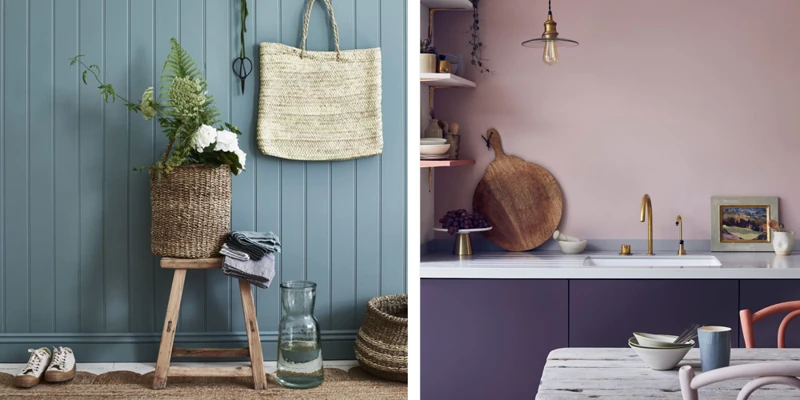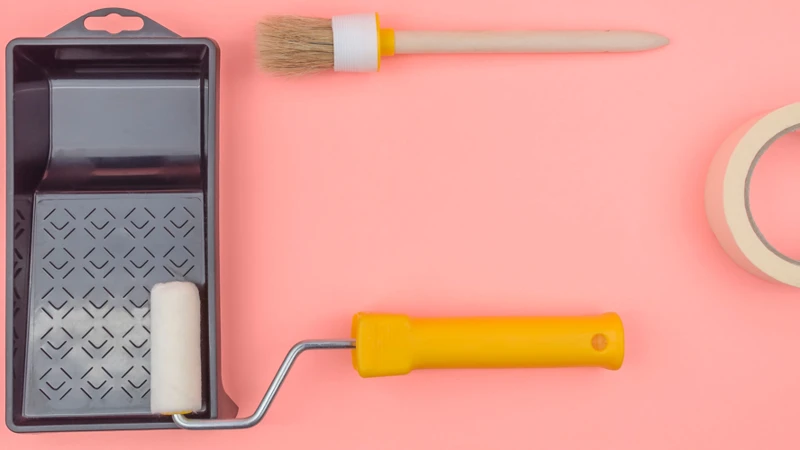Embarking on a DIY interior painting project can be both exciting and daunting. With the right approach, you can completely transform the look of your home. However, it’s essential to be well-informed to achieve that perfect interior paint job. In this post, we’ll explore some interior painting tips and painting preparation strategies to help you avoid common painting errors.
Understanding the Basics of Interior Painting
Before diving into your DIY painting guide, it’s crucial to grasp the fundamentals. Knowing the types of paint, necessary tools, and the general process sets a foundation for your project’s success. Interior painting is not just about applying color to walls; it’s a methodical process that, when done correctly, can significantly enhance the ambiance of your home.
Interior Painting Tips for Beginners
For those new to the brush and roller, a few key interior painting tips can make the difference between a haphazard look and a professional-quality finish. Patience, diligence, and attention to detail are your allies. From selecting the right shades to mastering wall painting techniques, beginners should take the process step by step to ensure a satisfying outcome.
Common Painting Errors and How to Avoid Them
Even the most enthusiastic DIY painters can fall victim to common painting errors. Let’s delve into several pitfalls and how to sidestep them to ensure your project is a showcase of your hard work.
Not Preparing the Surface Adequately
One of the painting mistakes to avoid is neglecting the preparation of your surfaces. Clean, smooth walls are the canvases for your paint. Skipping this step can lead to uneven textures and diminished paint adhesion.
Choosing the Wrong Brushes and Rollers
Different tools yield different results. Investing in quality brushes and rollers suitable for your paint type and wall texture is paramount. This decision can significantly impact the ease of application and final appearance.
Applying Paint Without Primer
Primer is the unsung hero of painting preparation. It ensures that your paint adheres properly and provides a uniform base — bypassing this step results in a less vibrant color and potential longevity issues.
Selecting Inappropriate Sheens and Finishes
Paint finish selection is not merely an aesthetic choice; it’s a functional one as well. The sheen of the paint can affect both the room’s look and the durability of the walls, so choose with care.
Overlooking Paint Color Samples in Your Space
Choosing paint colors is a critical decision. Test samples in your own space, as lighting and surroundings can dramatically alter the appearance of a hue. This step can prevent post-painting regrets.
Painting in Unsuitable Environmental Conditions
The environment in which you paint can affect drying times and finish quality. Extremes in temperature and humidity can ruin your hard work, so aim for mild, stable conditions when planning your project.
Common Painting Mistakes to Avoid During Application
- Skipping edge taping
- Overloading brushes or rollers with paint
- Applying uneven layers or failing to maintain a wet edge
Essential Painting Preparation Steps
Preparation is half the battle in achieving that perfect interior paint job. Here’s what you need to know to set the stage for painting success.
Cleaning and Smoothing Your Walls
Before painting, ensure your walls are clean, dry, and smooth. Fill in any holes or cracks and sand down rough areas. A pristine wall surface makes all the difference in the final product.
Using Painter’s Tape Correctly
Painter’s tape is a safeguard for clean edges and protecting trim. Apply it carefully and remove it at the right time — usually when the paint is dry to the touch but not fully cured — to avoid peeling.
Primers: When and Why to Use Them
Primer is essential, especially when covering dark colors, painting over a glossy finish, or working with new drywall. It creates a consistent base that enhances paint adhesion and color correctness.
Choosing Paint Colors Like a Pro
The colors you choose can define the atmosphere of your room. Here’s how to select paint shades with confidence.
Understanding Color Psychology
Colors influence mood and perception. Warmer tones can create a cozy atmosphere, while cooler shades might evoke calmness. Consider the psychological impact of your color choices on your living space.
Testing Paint Colors Under Different Lighting
Lighting can dramatically alter the appearance of paint colors. Always test your chosen colors in natural and artificial lighting at different times of the day to ensure you’re happy with the color in all conditions.
Wall Painting Techniques for a Perfect Finish
Mastering wall painting techniques is crucial for a flawless finish. Here are some methods and tips to guide you.
Brushing and Rolling Techniques
When using brushes, start from the edges and work towards the center. With rollers, use a zigzag pattern to spread the paint evenly, then smooth it out with straight, controlled strokes.
How to Avoid Overbrushing and Leaving Strokes
Overbrushing can leave unsightly marks. Work quickly but carefully, and always maintain a wet edge to avoid lap marks and ensure a smooth coat.
Cutting In Edges for a Crisp Look
‘Cutting in’ is the technique of painting clean lines around the edges of a room. A steady hand and a good quality angled brush can achieve sharp lines that define the space beautifully.
Paint Finish Selection: A Guide to Sheens
The finish of your paint can affect both the look and durability of your walls. Here’s how to make the right paint finish selection.
Matching Paint Finishes to Room Function
High-traffic areas benefit from glossier finishes for ease of cleaning, while bedrooms may look better with a flat or matte finish for a softer appearance.
Pros and Cons of Different Paint Finishes
Gloss finishes are durable and easy to clean but can highlight imperfections. Matte finishes hide blemishes but are less resilient. Consider the trade-offs when selecting your finish.
DIY Painting Guide: Step-by-Step Instructions
Follow these step-by-step instructions from our comprehensive DIY painting guide to approach your project with confidence.
Preparing Your Space and Materials
Clear the room, protect floors and furniture with drop cloths, and gather all your materials. Having everything ready and accessible streamlines the process.
The Painting Process: A Systematic Approach
Start with the ceiling, move to the walls, and finish with the trim. Work in sections and always paint from top to bottom to manage drips and maintain a uniform coat.
Interior Paint Correction: Fixing Common Issues
Even with careful application, issues may arise. Here’s how to handle interior paint correction effectively.
Dealing with Paint Drips and Spatters
Catch drips and spatters early while the paint is still wet for easy cleanup. If they’ve dried, gently sand and touch up the affected area.
Rectifying Uneven Paint Coverage
Uneven coverage can be corrected with additional coats. Let the paint dry fully between layers to assess the need for further application.
Touching Up and Maintaining Your Paint Job
For touch-ups, use the original paint and apply sparingly to blend the new with the old. Regular cleaning and gentle care help maintain your walls’ fresh appearance.
Tips for a Perfect Interior Paint Job
Here are some final tips to ensure your painting project is a resounding success.
Maintaining Consistent Edges and Coverage
Consistency is key in both edges and coverage. Use a steady hand and refrain from rushing. This attention to detail pays off in a cohesive look.
Final Walkthrough: Inspecting Your Work
After painting, conduct a thorough walkthrough. Look for any missed spots, drips, or inconsistencies. A careful inspection allows you to make any necessary corrections before the paint fully sets.
Conclusion: Enjoying Your Newly Painted Space
After putting in the effort and care, stand back and admire your handiwork. A successful DIY interior painting project can bring immense satisfaction and a renewed love for your space.
Reflecting on the Painting Process
Reflect on what you’ve learned through the process. Each stroke of the brush has contributed to your growing expertise in interior painting.
When it comes to giving your home a fresh new look, painting can make a world of difference. However, it’s crucial to avoid common pitfalls to ensure the best results. If you’re planning to take on an interior painting project, you’ll want to steer clear of the missteps that could affect the outcome. For a flawless finish, check out our guide on how to avoid mistakes with your roller frame. And if you’re thinking about an exterior update as well, our articles on the top mistakes to avoid when choosing an exterior paint color for your home and how to avoid painting your home’s exterior at the wrong temperature are invaluable resources to help you achieve professional-looking results.
Interior Painting Tips Recap
Remember, the key to a successful paint job is preparation, patience, and attention to detail. With these interior painting tips and a bit of practice, you’re well on your way to mastering the art of painting your home.



